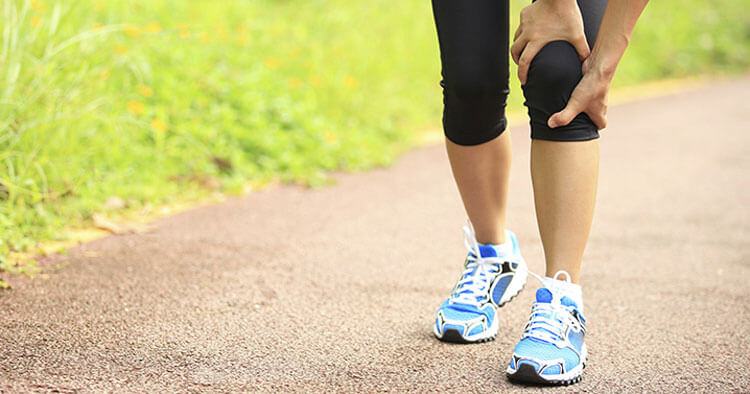Back and Joint Pain, Sports Injuries and Management
What Is Chondromalacia Patella?
Chondromalacia Patella, The Basics
Chondromalacia patella, also referred to as patellofemoral syndrome, or runners knee is the most common cause of persistent knee pain. With chondromalacia patella pain the discomfort is typically aggravated by activity, or prolonged sitting with the knees bent (such as sitting at the movies, or whilst on a long haul flight). The condition is common among young, athletic individuals, but may also occur in older adults who have arthritis of the knee. Chondromalacia is often seen as an overuse injury in sports and in some individuals simply taking a few days off from training can produce good results without any other intervention, however frequently physiotherapy addressing knee load and biomechanics can be beneficial where rest alone doesn’t provide satisfactory relief. It is suggested by many that the abnormal “tracking” of the kneecap (patella) causes the patella to move in an unbalanced way over the groove in the lower end of the thighbone (femur). This mal-tracking of these joint surfaces is considered to be a source of pain and inflammation. In situations where patella tracking is considered to be a causative factor in knee pain then physiotherapy treatment may be directed at “improving” the “alignment” of the patella within the groove it rides in.
What Causes Chondromalacia Patella?
As mentioned chondromalacia patella is a common cause of anterior knee pain and refers to the abnormal softening of the cartilage of the underside the kneecap, where degeneration of the cartilage may occur, or be exacerbated due to to altered alignment of the kneecap in its groove. The kneecap resides over the front of the knee and with bending and straightening of the knee, the backside of the kneecap glides up and down in this groove. Muscles, tendons, fascia are all tasked with the role of assisting the kneecap to move “ideally” in this groove and alterations in their ability to do so for whatever reason, may contribute to deterioration in the patella cartilage.
In the ideal situation your kneecap glides smoothly and evenly in the groove, guided as such by bony and soft tissue constraints. However in chondromalacia patella patients are frequently suggested to have abnormal “tracking” of the kneecap, a somewhat imbalance of forces pulling at the kneecap.
Abnormal Tracking Of The Patella May Result From:
The following list has some of the issues that are often implicated/factors that are subsequently attempted to be addressed with regard to patella “tracking” issues.
- Altered bony alignment of the lower limb, hip, knee, ankle due to a congenital condition, or an incident like a previous fracture to a growth plate altering bony growth.
- Weak thigh muscles, specifically the quadriceps at the front of your thigh (and more specifically the VMO muscle).
- Weak hip stabilizers like the deep gluteal muscles are also another group of muscles that are commonly considered to contribute to strength and mobility imbalances in and around the hip and thigh, potentially contributing to patellofemoral complaints.
- Tight quadriceps and lateral thigh structures including the ITB
- Repeated stress to your knee joints, such as from running, or jumping, as well a a direct trauma to the knee such as a fall, or impact directly to the kneecap.
Signs And Symptoms
- Chondromalacia patella is generally associated with vague discomfort at the front of the knee (anterior knee pain)
- The pain is usually aggravated from activities such as running, jumping and even irritated from simple daily activities including climbing up, or down stairs.
- As mentioned earlier prolonged sitting with the knee in moderately bent postures is another common cause of pain.
- The individual may feel sensations of grinding, or cracking when bending, or extending your knee, which is perceived to have its origin around the kneecap.
- And on assessment they may present with an obvious reduction in quadriceps muscle mass as discomfort may lead to disuse and muscle atrophy.
- Mild swelling of the knee may, or may not be present.
Who Is At Risk?
Certain individuals are predisposed to developing chondromalacia patella. Anterior knee pain from chondromalacia patella is especially common in:
- Teenage girls, or young adults, during growth spurts, the muscles and bones develop rapidly, which may contribute to short-term imbalances between muscle and bone development as well as muscle strength imbalances and impaired postural control impacting biomechanics.
- Females are more likely than males to develop runner’s knee
- Being knock-kneed, or flat-footed runners are relatively common biomechanical variations noted among sufferers with this condition.
- Previous injury to the kneecap, such as patella dislocations, can increase your risk of developing runner’s knee
- As can a high level of activity, individuals engaging in frequent high load exercises for the knee joints.
- Patella variations such as a small patella, high riding patella are considered to be predisposing factors, a reason why X-rays may be useful to look at the macroscopic morphology of the kneecap and the “groove” it tracks and glides in.
Disclaimer: Sydney Physio Clinic does not endorse any treatments, procedures, products mentioned. This information is provided as an educational service and is not intended to serve as medical advice. Anyone seeking specific advice or assistance regarding What Is Chondromalacia Patella? should consult his or her general practitioner or physiotherapist or suitably skilled practitioner.


